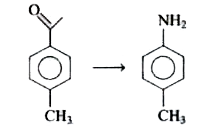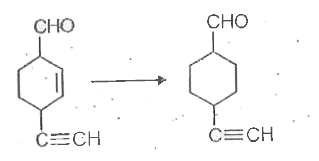Yellow ammonium sulphide solution is a suitable reagent for the separation of
HgS and PbS
PbS and Bi2S3
Bi2S3 and CuS
CdS and As2S3
The correct Answer is:D
To determine which compounds can be separated using yellow ammonium sulfide solution, we need to analyze the solubility of the sulfides in this reagent.
1. Identify the Compounds: The question presents four pairs of sulfides:
- HgS and PbS
- PbS and Bi2S3
- Bi2S3 and CuS
- CdS and As2S3
2. Understand the Properties of Yellow Ammonium Sulfide: Yellow ammonium sulfide is known for its ability to dissolve certain metal sulfides while leaving others undissolved. It is particularly effective in separating sulfides of different groups based on their solubility.
3. Group Classification of Sulfides:
- Cadmium Sulfide (CdS) belongs to group II A.
- Arsenic Sulfide (As2S3) belongs to group II B.
- Other sulfides like HgS, PbS, and Bi2S3 have different solubility characteristics.
4. Analyze the Pairs for Separation:
- HgS and PbS: Both are insoluble in yellow ammonium sulfide.
- PbS and Bi2S3: Both are also insoluble in yellow ammonium sulfide.
- Bi2S3 and CuS: Both are insoluble in yellow ammonium sulfide.
- CdS and As2S3: CdS is soluble in yellow ammonium sulfide, while As2S3 is not.
5. Conclusion: The only pair that can be effectively separated using yellow ammonium sulfide is CdS and As2S3. Therefore, the correct answer is CdS and As2S3.
Final Answer:
Yellow ammonium sulfide solution is a suitable reagent for the separation of CdS and As2S3.
- HgS and PbS
- PbS and Bi2S3
- Bi2S3 and CuS
- CdS and As2S3
- Cadmium Sulfide (CdS) belongs to group II A.
- Arsenic Sulfide (As2S3) belongs to group II B.
- Other sulfides like HgS, PbS, and Bi2S3 have different solubility characteristics.
- HgS and PbS: Both are insoluble in yellow ammonium sulfide.
- PbS and Bi2S3: Both are also insoluble in yellow ammonium sulfide.
- Bi2S3 and CuS: Both are insoluble in yellow ammonium sulfide.
- CdS and As2S3: CdS is soluble in yellow ammonium sulfide, while As2S3 is not.
Yellow ammonium sulfide solution is a suitable reagent for the separation of CdS and As2S3.
Similar Questions
Knowledge Check
The suitable reagents for the following reaction are:
 APCl5−−→NaOH−−−→Δ−−→BI2+NaOH−−−−−−→H⊕−−→NH3−−−−−→ΔBr2+KOH−−−−−−→CNH2OH−−−−→PCl5−−→dil.NaOH−−−−−−−−→ΔN3H−−−−−→ΔDH2N−OH−−−−−−→Δ−−→
APCl5−−→NaOH−−−→Δ−−→BI2+NaOH−−−−−−→H⊕−−→NH3−−−−−→ΔBr2+KOH−−−−−−→CNH2OH−−−−→PCl5−−→dil.NaOH−−−−−−−−→ΔN3H−−−−−→ΔDH2N−OH−−−−−−→Δ−−→
Select the suitable reagent for above conversion.ACH2N2/ΔBCBr4/RLiCH2C=CH2Dt-BuOK
The suitable reagent for the following reactions is

View Solution
Suitable reagent for following conversion
View SolutionThe most suitable reagent for given conversion is

View SolutionThe most suitable reagent for the following conversion, is
View SolutionSuggest the suitable reagent for the following transformation.

View SolutionThe most suitable reagent for the conversion of
RCH2OH→RCHO is
View Solution
